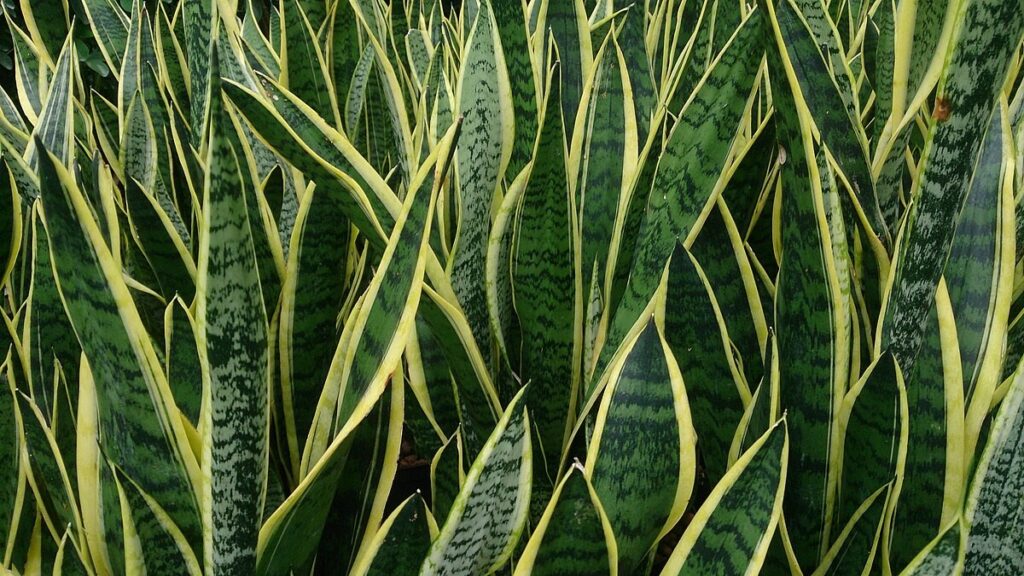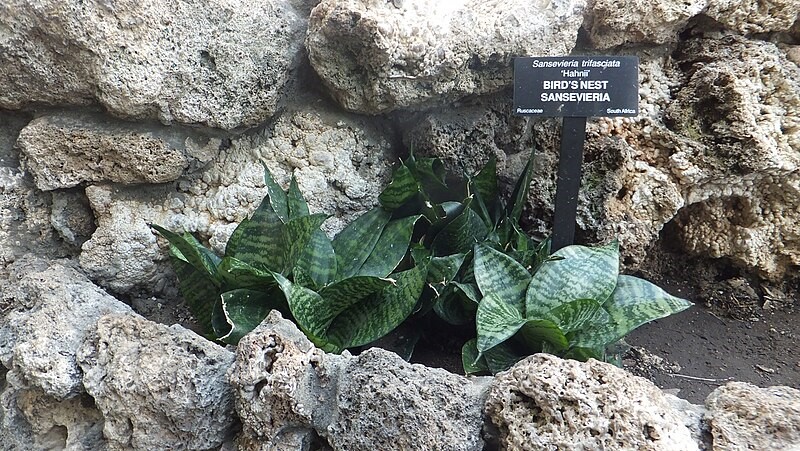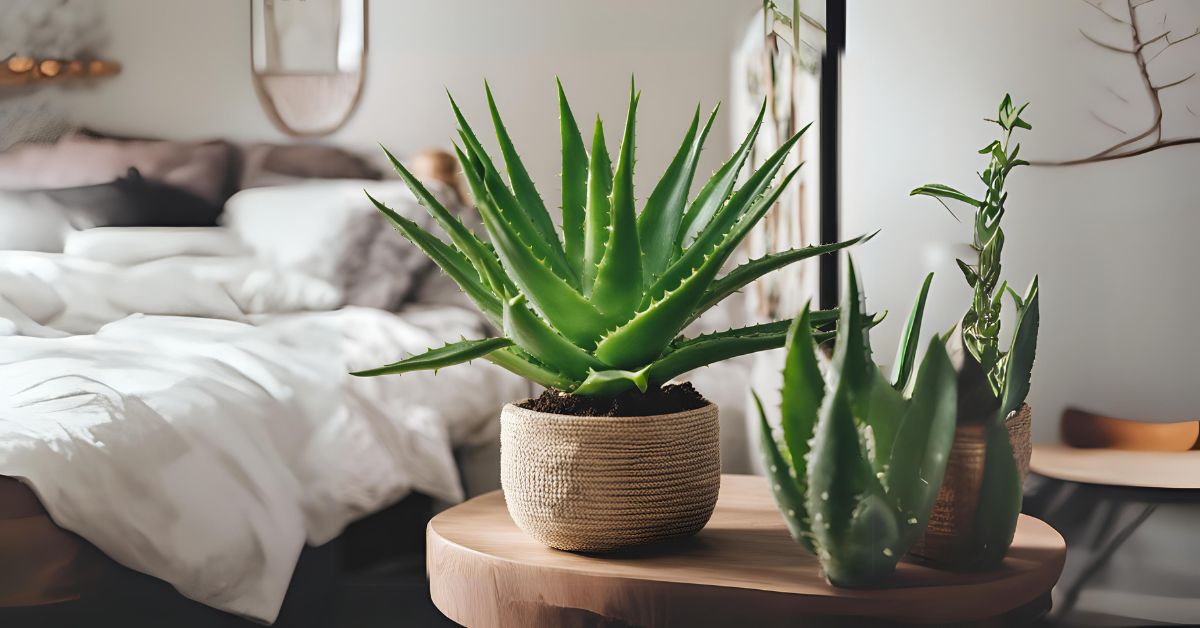- What is a snake plant?
- Snake Plant Benefits
- What makes Snake Plant Special?
- Where to place your Snake Plant?
- History and Cultural significance
- Snake plant specifications
- Snake plant Types and Varieties
- Snake plant Care and Maintenance
- Snake plant Propagation
- Plant Problems in Snake Plants
- Common Misconceptions about Snake Plants
- Final Thought and Personal View
Did you know Snake plant release oxygen at night, unlike most plants that release carbon dioxide? Add them to your bedroom to improve the air quality while sleeping.
What is a snake plant?
Snake plants are also known as “mother-in-law’s tongue”? No, it’s not because they’re sharp-tongued (thankfully), but because their leaves are long and pointed, just like…well, you get the idea!
The Sansevieria trifasciata, commonly known as the Snake Plant, is an indoor plant with unique evergreen sword-shaped leaves. It is native to Asia and Africa and is widely available elsewhere.
This low maintenance plant is the perfect for anyone who want to add green beauty at their home, you don’t have to be pro in planting to take care of this plant. If you haven’t got snake plant yet, then you should get one.
NASA actually did a study and found that snake plants can help remove toxins like formaldehyde and benzene from the air.
Snake Plant Benefits
Snake Plants have many benefits and uses aside from their enchanting beauty:
- Snake plant, aka sansevieria, is a beginner-friendly plant.
- It is known for its air-purifying qualities and enhancing positivity in the surroundings.
- It needs a minimum amount of care, and you will learn most of the things you need to take care of your snake plant in this blog.
- They can survive the drought and sustain themselves without water for a long time.
- Snake plants do not need direct sunlight and can survive in low-lighting conditions.
What makes Snake Plant Special?
- Can survive in low to really low light.
- Able to survive the drought-like conditions.
- Releases oxygen even at night.
Where to place your Snake Plant?
◼Brings prosperity and wealth
◼Creates the energy equilibrium
◼Strengthens the relationship
◼Boosts health
History and Cultural significance
Snake Plants are native to tropical regions of Africa, Madagascar, and Asia.
They establish the equilibrium wherever they stay as per Feng Shui. They are considered to be the protectors from the negative energy. In some cultures snake plants are seen as symbols of resilience because they are adaptable and survive tough conditions. As per Vastu, Snake plants symbolize wealth and fortune.
Snake plant specifications
You know what’s cool about snake plants? They come in all sorts of colors and sizes! From dark green to grayish-green, there’s a whole spectrum to choose from. And get this—they can range from as tiny as 6 inches to as tall as a whopping 10 feet! Imagine having a majestic snake plant towering over your space with other selected indoor plants—it’s like having a mini jungle indoors!
| Botanical Name | 🌱 Sansevieria 🌱 |
|---|---|
| Color |
|
| Size |
|
| Origin | 🌍 Native to tropical regions of Africa, Madagascar, and Asia 🌴 |
| Flowering |
|
| Pattern | 🌿 Unique vertical stripes, variegation, or bands in gray, yellow, or green hues 🍃 |
| Planting Season |
|
Snake plant Types and Varieties
◼Sansevieria Trifasciata Laurentii

◼Sansevieria Masoniana

◼Sansevieria Hahnii

◼Sansevieria Cylendrica
Snake plant Care and Maintenance
◼Lighting and Placement
For Spring and Summer:
Keep the plant away from the window but in a bright location with no direct sunlight. Avoid south-facing windows, as sunlight stays the longest in this direction. Ensure that the plant is kept in a well-ventilated area.
For Fall and Winter:
Winter days lack natural sunlight. Expose the snake plants to grow lights to maintain their growth.
◼Watering
For Spring and Summer:
Spring and summer are the growth seasons for the snake plant. Water the plants as well, using the soak and drain method that was described earlier. Water again when the top inch of the soil feels dry.
For Fall and Winter:
The snake plant will go dormant in this season, so not much watering is needed. The best strategy is to water only when the entire soil is dry. Ensure to drain all the water out and not let the plant sit in it.
◼Temperature
◼Humidity
Snake plants often enjoy the average home’s humidity levels, which are typically between 40% and 50%. This also fits in perfectly with the majority of people’s comfort zones.
The great news is that snake plants can withstand humidity levels outside this ideal range. They can survive in drier situations (down to 30%) and perhaps somewhat excessive humidity (up to 60%).
◼Fertilizer
◼Repotting
◼Soil
◼Cleaning
◼Pruning
Pruning is not often required for snake plants unless it is done for size control or to maintain appearance.
Ensure the following tips if pruning:
- The pruning tool should be sharp and sterilized. You do not want infections to pass on to your plant from other
- Remove the leaves entirely if they are damaged or mushy.
Snake plant Propagation
◼By dividing
- Carefully remove the snake plant from the pot.
- Using a sharp knife or pruners, gently detach the puppies from the mother plant by untangling the roots. Make sure each division has enough roots and leaves.
- If handling sap causes skin irritation, wear gloves.
- Repot each division in a container somewhat larger than the root ball, using a well-draining potting mix.
- Water moderately and let the excess water drain.
Put the newly potted divisions under bright, indirect light.
◼By leaf cutting
- Pick a robust leaf to cut from your snake plant.
- Cut the leaf into portions that are at least 2-3 inches long, either vertically or horizontally, using the sterilized knife. If at all feasible, try to trim parts that have growth nodes, or small bumps, as these encourage new growth.
- The leaf cuttings should be left on a surface with good ventilation for a few days to dry out. This lessens the chance of decay.
- It’s optional to soak the chopped ends of the leaf pieces in rooting hormone to promote the growth of roots.
- Pour potting mix that drains properly into your pots.
- With the cut end down, press the leaf cuttings about an inch deep into the ground.
- Water sparingly, and let extra water run off.
- The pots should be in bright, indirect light.
Plant Problems in Snake Plants
The most common problem for your snake plant can be overwatering, when you notice foul smell, mushy or soft leaves, and constantly wet soil then it is the indication that you are overwatering your plant and its root probably rotting, in this case you should cut off the rotted root and repot the plant. Watch out for changes in the leaves of your snake plant. Infection can cause wilting, yellowing, or browning on the leaves, and wet patches in the leaves. Bacterial and fungal infections also could be the cause.
Pets like mealybugs, spider mites, scales, gnats, aphids and whiteflies can be the real headache for your snake plant. Keeping a close check on your snake plant is the first line of protection. Check the leaves frequently for indications of pests if you notice anything, then first remove the insects and affected area and then thoroughly mist the leaves and stems of your plant with neem oil and water mixture.
Pay close attention to any potential pest-hiding locations. Every few days, reapply until the bugs are eradicated.
Additionaly, you can use solution of insecticidal soap and water, wipe your plant’s leaves with the solution and do carefully read the label. Also, you may quickly eradicate small-scale or mealybug infestations by dipping a cotton swab into rubbing alcohol and dabbing the pests immediately.
Common Misconceptions about Snake Plants
One common misconception is that they need lots of water, but guess what? These plants prefer to be on the dry side. Yep, they’re like the desert kings of the plant world, so no need to drown them with water!
Another myth floating around is that snake plants don’t need any light at all. While they can tolerate low light conditions, they still need some sunshine to keep those leaves happy and healthy. So, don’t banish them to the darkest corners of your home—give them a little sunlight now and then!
Final Thought and Personal View
Snake plants are ideal for people with hectic schedules or those just starting a family,.
They can withstand a low lighting conditions, barring extremely low light, neglect, and irregular watering. They have a lower chance of developing serious issues since they are resistant to illnesses and pests. Snake plant don’t need to be repotted frequently, which lowers the need for regular intervention.
Snake plants are easy to propagate, and you may exchange plants with friends or expand your collection by simply propagating snake plants by division or leaf cuttings. Now you know everything about snake plant and now you should get one.
Green love to you. Keep smiling. Ciao.










